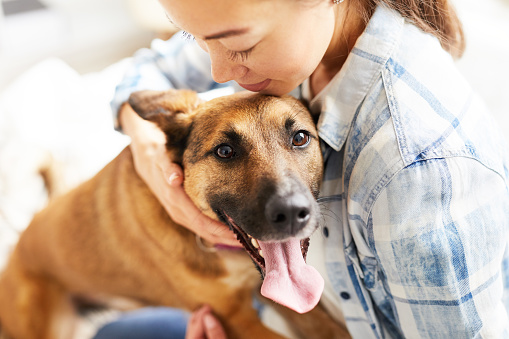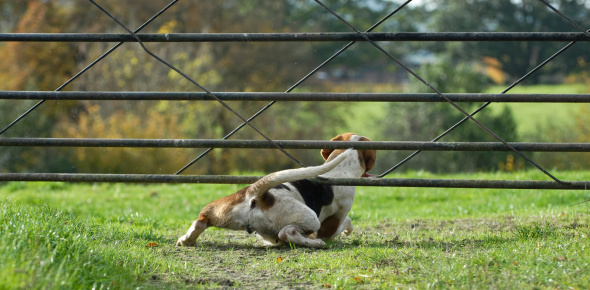It’s inevitable; at some point, your dog will get loose. A dropped leash, open gate, or slipped collar is every pet parent’s nightmare, and loose dogs can get into all sorts of troublesome scenarios with other dogs, people, and cars. Fear not, however, there is a way to decrease the likelihood that your loose dog gets injured, and that is through dog recall training. Dog recall training is arguably the most important thing you will ever teach your dog, and here’s why.

Correcting a Dog Recall Training
While dog recall training is one of the essential things to teach your dog, it is also one of the hardest. If you call your loose dog to you and they don’t come, or worse, run in the opposite direction, you aren’t alone. Far from it, this behavior is one of the most significant issues dog parents have. Anyone who has spent time training their dog that it’s essential to do something quickly when you want to change a behavior, but what can you do when your dog is far away from you? How can you correct a dog during dog recall training?
Why It’s Hard To Correct A Dog Ignoring Recall
Traditional advice from dog trainers used to be that you needed to correct your dog where they were when they ignored the recall. That meant somehow running down your dog, dragging them to the sport where they were when they ignored you, and correcting them verbally. Unfortunately, there are a few critical issues with this approach to correcting the behavior. Namely, for the dog’s behavior to be modified by the correcting you provide, you would have to be able to correct them within seconds of them ignoring you. Correcting them immediately is almost impossible since your dog is likely to take off after ignoring a recall.
Dogs Run Faster Than Humans
Unless you are a particularly fast human or have a particularly slow dog, your dog can probably outrun you. More often than not, by the time you catch your dog, assuming you can catch them eventually, your dog will have wholly forgotten ignoring you. This fact means that they won’t understand why they are being punished in the first place.
Punishing Your Dog Incorrectly Can Damage Your Relationship
When your dog doesn’t understand why they’re being punished, correcting them can cause damage to your relationship. While it might be temporary, punishing your dog makes you the “bad guy.” Punishing your dog once you catch them also guarantees that they will make it harder to catch them next time so they can avoid punishment.
Creating Effective Dog Recall Training
A good recall stems from creating a situation where your dog wants to be next to you. So, the first building block to dog recall training is cultivating a close relationship with your dog. This bonding should start as soon as you get your pup, whether they’re 8 weeks or 8 years old. If your dog genuinely wants to be near you, teaching them to come to you on command will be that much easier.
What To Do When Your Dog Ignores Your Recall
There are 3 actions to take when your dog ignores your attempt to recall them. They are recovery, management, and training. First, recover your dog, then ensure they don’t have the opportunity to get loose and ignore you again. The third is to teach your dog a rock-solid recall.

1. Recovering Your Dog
There are a few options when it comes to recovering your loose dog, and you as their owner know what might work best for your pooch. Here are some of the most effective ways to recover your dog.
One of the best strategies for recovering your dog is to make lots of noise to get their attention and then to run away. Most dogs have a prey drive and will be attracted to your flight. They also might view it as a fun game and be more than happy to join in. However, if your dog is running off to play with another dog, then they might not choose to follow you over their new canine buddy.
If you do have to run after your dog, don’t do so while yelling at them aggressively, or you’ll be sure to chase them further away. The best method is to walk quietly after your dog until you catch up with them. Once you catch up, turn them towards you and reward them for giving their attention to you. The next step is managing your dog.

2. Managing Your Dog
You need to do two main things to manage your dog when you know they don’t have a solid recall. The first thing is to stop calling your dog unless you know that they can’t ignore you. This step is crucial because the more your dog ignores your recall, the harder it will be to train (or retrain). If this happens enough times, your recall command will effectively be useless.
The second step to managing your dog’s lack of recall is to prevent situations in which they can run away from you. Until you have trained your dog’s recall, do not allow your dog loose outside of fenced areas. Keep your dog leashed whenever you are outside of a fenced-in area. You can use a long line and a harness in places where you want your dog to be able to run around. One of the best parts of the long line is that you can spend most of the time letting it drag along the ground, then pick it up if or when you anticipate your dog might bolt.
3. Dog Recall Training
After recovering your loose dog and managing the situation that led to them getting loose, the third step is to train your dog’s recall. Read more in-depth on how to train a recall here. Here are just a few tips to remember:
- An effective recall behavior is not created overnight. This process takes time, patience, and consistency.
- If you train a fantastic recall but you never practice with your dog again, they will absolutely forget the behavior when they get loose and you really need it to work.
- Any kind of dog training requires a positive attitude; if you’re having a bad day, it’s probably best to skip training until you’re in a better headspace.
- Training sessions should be fun, short, and always try to end on a positive note.

Nothing is more frustrating than chasing after your loose dog, especially after they have ignored your call. It’s even harder not to harshly punish your dog once you catch up with them. However, it’s essential that you stay calm and collect your dog, then manage the situation where they got loose, so it doesn’t happen again until they’re adequately trained. As with any training, creating a recall behavior with your dog can be a painstaking and frustrating experience. However, you’ll never regret dog recall training, as it can play a large part in keeping both of you safe on your adventures.
